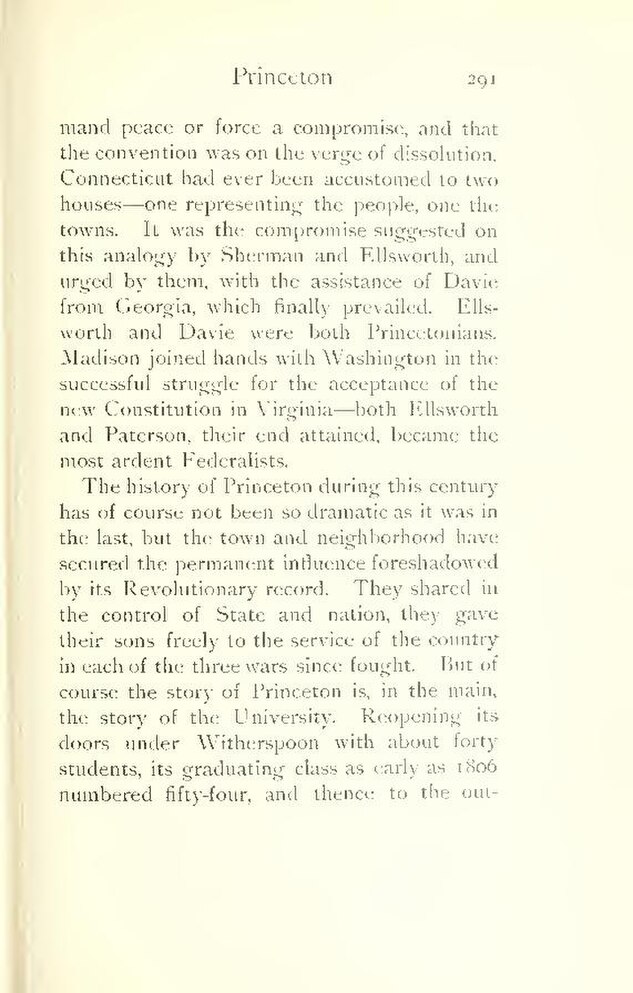- mand peace or force a compromise, and that
the convention was on the verge of dissolution. Connecticut had ever been accustomed to two houses—one representing the people, one the towns. It was the compromise suggested on this analogy by Sherman and Ellsworth, and urged by them, with the assistance of Davie from Georgia, which finally prevailed. Ellsworth and Davie were both Princetonians. Madison joined hands with Washington in the successful struggle for the acceptance of the new Constitution in Virginia—both Ellsworth and Paterson, their end attained, became the most ardent Federalists.
The history of Princeton during this century has of course not been so dramatic as it was in the last, but the town and neighborhood have secured the permanent influence foreshadowed by its Revolutionary record. They shared in the control of State and nation, they gave their sons freely to the service of the country in each of the three wars since fought. But of course the story of Princeton is, in the main, the story of the University. Reopening its doors under Witherspoon with about forty students, its graduating class as early as 1806 numbered fifty-four, and thence to the out-
